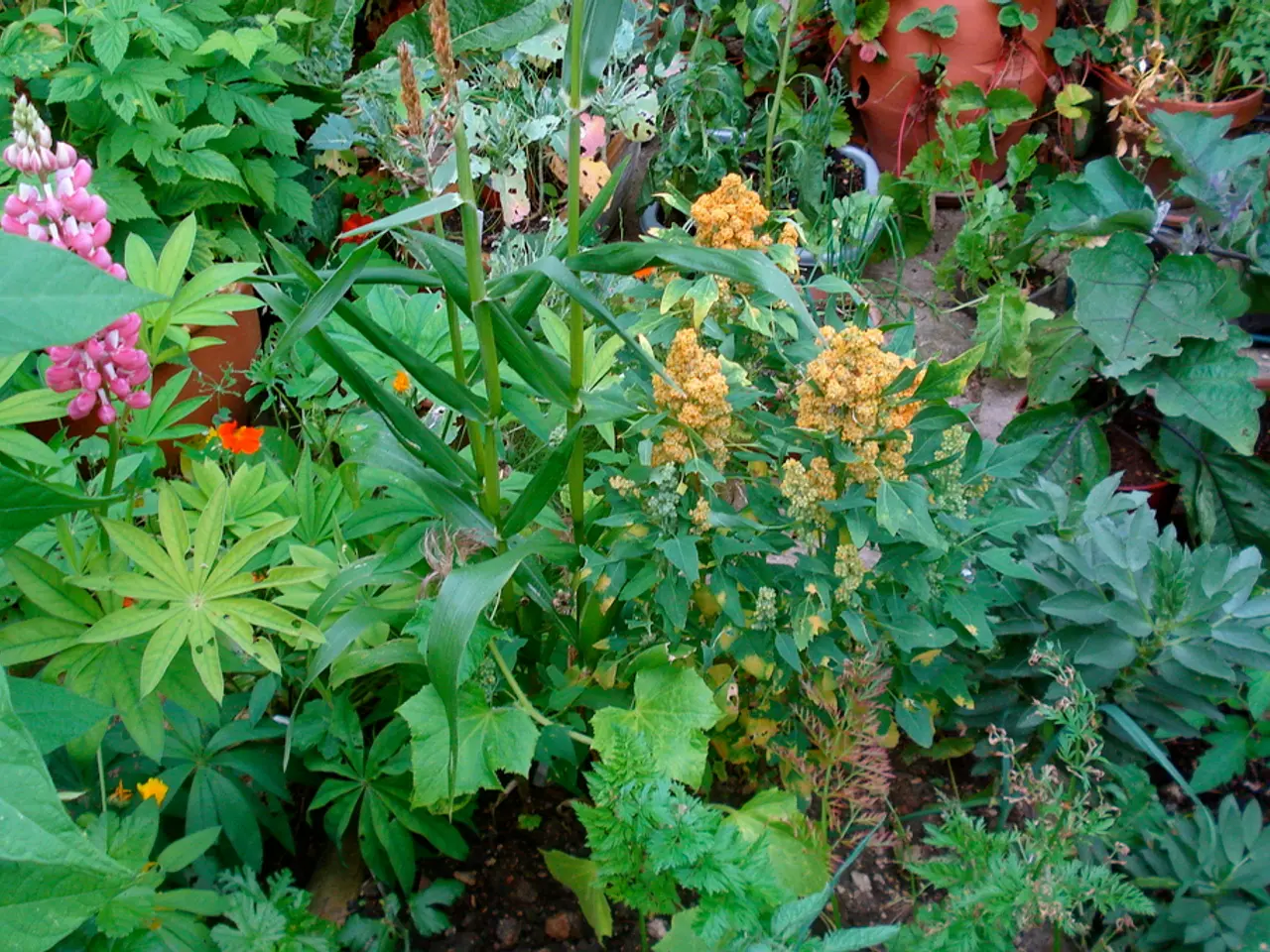Inexpensive Solutions for Creating a Lush Garden
In the pursuit of a lush, verdant garden, one doesn't have to break the bank. Here are some effective strategies for gardening on a budget that not only save money but also promote sustainable and healthy garden growth.
DIY Garden Projects
Upcycling old furniture like dressers into potting benches or storage, decorating rocks for garden paths, and building simple storage benches or sheds can save money on garden infrastructure and tools. These projects not only save money but also add a personal touch to your garden.
Inexpensive Soil Management
If your native soil is good quality, there's no need to spend money on expensive soil mixes. Fill raised beds partially at first, add organic debris (leaves, wood chips) to reduce soil volume needed, and incorporate homemade or local compost.
Smart Seed and Plant Selection
Choose seeds suited to your climate and soil, and buy seeds in bulk or from seed swaps to save money. Avoid expensive potting mix unless necessary.
Mulching and Composting
Making your own compost from yard waste and using organic mulch (straw, leaves, grass clippings) conserves moisture, suppresses weeds, and enriches soil naturally without costly inputs.
Utilizing Free Resources
Utilize resources like Texas A&M AgriLife Vegetable & Herb guides for local planting advice, or free tutorials on platforms such as YouTube and TikTok for budget gardening tips and low-maintenance plant recommendations.
Being Resourceful and Creative
Being resourceful and creative can save money on tools, soil, seeds, seedlings, and plants. For example, multiple seedlings can be grown in one pot, and exchanging divided plants with gardening friends is an option to acquire new plants.
Saving on Water
Watering individual plants instead of the entire garden area is recommended to conserve water. A drip irrigation system can help conserve water and ensure plants get the right amount of water.
Using Free Resources for Learning
Many free resources can help you learn more about gardening and connect with other gardeners in your community. Subscribing to the website and following on Instagram, Facebook, or Pinterest can provide the latest updates.
Growing in Unconventional Ways
Using exterior walls or a pallet fence can help catch snow and utilize natural microclimates. Installing a rain barrel to collect rainwater is an eco-friendly and budget-friendly option for watering plants.
Starting Seedlings
To start seedlings later at a south-facing window can save on growing lights. A printable indoor seed starting schedule can be found here. Recycled bed sheets, reused buckets, and glass jars can be used for frost protection.
Choosing Native Plants
Native plants are better suited to your climate and save time and money. They require less maintenance and are more resistant to pests and diseases.
Expanding Your Perennial Garden
A perennial garden can be expanded by dividing mature plants. This method is not only cost-effective but also helps propagate healthy plants.
Gardening on a Budget: A Worthy Endeavour
Gardening on a budget can produce a beautiful garden that produces healthy vegetables and flowers without spending much money. With these strategies, one can enjoy the benefits of a garden without the hefty price tag.
- Building DIY furniture like potting benches, garden path decorations, and storage benches or sheds can save money on garden infrastructure and tools, adding personal touch to your garden.
- Incorporating homemade or local compost into raised beds and using organic debris (leaves, wood chips) can reduce soil volume and improve its quality without relying on expensive soil mixes.
- Smart seed and plant selection, such as choosing seeds suitable for your climate, soil, and buying seeds in bulk or from seed swaps, can save money on gardening expenses.
- Mulching with organic materials like straw, leaves, or grass clippings can conserve moisture, suppress weeds, and enrich soil naturally, conserving resources and money.
- Utilizing free resources like agricultural guides, or educational videos on platforms such as YouTube and TikTok, can offer valuable advice on budget gardening and low-maintenance plant options.
- Being resourceful and creative, such as planting multiple seedlings in one pot or exchanging plants with gardening friends, can lead to significant savings on tools, seeds, seedlings, and plants.
- Conserving water can be achieved by watering individual plants instead of the entire garden area, or by using a drip irrigation system that ensures efficient water usage.
- Connecting with the gardening community, by subscribing to websites and following on social media platforms, allows for the sharing of knowledge and expertise, fostering a enjoyable and budget-conscious gardening lifestyle.




